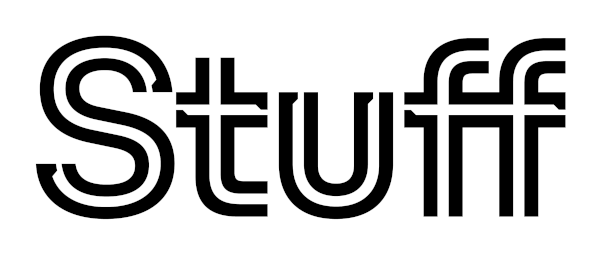By Susan Edmunds of 
Composite image with Reserve Bank governor Adrian Orr.
Photo: RNZ
Mortgage broker Glen McLeod had two requests from clients wanting to apply for hardship provisions from their banks on Thursday alone.
They were people whose income had not kept up with the increasing cost of living, and the rapid rise in interest rates, and who were struggling to keep up with their home loan payments.
“I discussed whether they could shave costs by giving up streaming services and other discretionary spending. The reality is they already had reduced those costs,” he said.
Some people were considering a shift to Australia, others were changing jobs to try to earn more money.
“As loans mature, the more hardship we will see. There is a lot more pain to come in this market.”
At the start of the year, commentators were united in their view that relief from interest rates would start around the middle of this year.
But as the weeks have ticked by, and more economic data has come to light, those views have changed. Now, the country’s largest bank expects two more official cash rate (OCR) increases before cuts can begin.
So what has caused the about-face, what’s driving rates now, and when might homeowners finally see some relief?
How did we get here?
Infometrics chief executive Brad Olsen said the path that led us to worry that the Reserve Bank would increase the OCR next week started at the central bank’s last update, in November.
The Reserve Bank increased its projected track for the cash rate a bit, picking a peak cash rate of 5.7 percent.
The bank usually moves the OCR in 25bps increments, so that track meant it was probably leaning towards another increase, but not quite there yet. The tone from the bank was firm – if there were any nasty surprises, it was leaving the door open for another rise.
Then gross domestic product (GDP) data in December was weaker than expected, which gave markets hope that the Reserve Bank’s efforts were proving successful.
“That’s where we saw swap rates fall,” Olsen says.
“The economy was weaker and markets thought if the economy is weaker, it means less inflationary pressure and therefore the Reserve Bank might be happy with that and able to cut sooner rather than later.”
Brad Olsen says the market forecast for a mid-year OCR cut started to look a bit more questionable after the inflation data came out and the central bank’s chief economist pointed to risks.
Photo: RNZ / Samuel Rillstone
The one-year wholesale swap rate fell form 5.56 percent on 13 December to 5.32 percent on 15 December.
But then inflation data came out. While the headline number was lower than expectations, local inflation was sticky. Reserve Bank chief economist Paul Conway made a speech pointing out some of the risks that might keep interest rates higher.
Olsen said that was when the market forecast for a mid-year OCR cut started to look a bit more questionable.
“At that point, the market is going ‘wow we’ve been pricing in some steep cuts and some big moves pretty quickly saying the Reserve Bank is wrong. But the Reserve Bank is the one that makes these calls and they’re not really setting the ground work for shifting position’.”
Then the unemployment data came in stronger than expected, particularly in regards to wage growth.
Finally, ANZ dramatically changed its forecast – from a likely cut in August to a hike in February and April. Markets responded quickly, and swap rates lifted signficantly, although not quite back to their early December levels.
Even economists who do not agree with ANZ now expect cuts to happen later in the year than they did previously, and concede another increase is possible.
“The job of the Reserve Bank is a bit bigger than they thought, it’s taking a bit longer than they thought,” chief economist Sharon Zollner said.
“Where the difference of opinion lies is whether the Reserve Bank will view this as a big problem or be pretty chill. Our take is that they won’t be chill at all.”
Zollner said it could be that the economy was holding up better than the Reserve Bank wanted it to because people had decided that rates had peaked. Another 50bps of OCR would be the shock that could change their thinking.
What can borrowers do?
For borrowers, this is all a bit bewildering.
Rates have gone from the lowest on record to higher than average in a historically short space of time.
Sharon Zollner says if she is not right that an increase happens this month, it will still be a live possibility in April.
Photo: RNZ / DOM THOMAS
While ANZ is predicting OCR increases, it has not actually moved its retail interest rates. BNZ and Westpac have cut.
“I can understand people going ‘well what is going on here?’,” Olsen said. “It becomes what do you do – people are not going to be able to wait to refix their rate. It will come up and they have to make a call.”
He said people who wanted to miss a possibly turbulent few months ahead could fix for a year or 18 months. “We’re not of the view that interest rates are going to massively pitch upwards or downwards. You’re seeing smaller and less regular changes, probably reflective of the fact that we are close to the turning point… we might bobble along for the next 12 months potentially.”
He said people could talk to their lenders about what any further increase might mean for their repayments.
If ANZ proves correct and there is another two increases in the OCR, it could mean more pressure on the swap rates, he said, but it might not be to the extent people expected.
Much of the previous fall in swap rates had not been passed on to consumers, he said, and it had not fully reversed. “I don’t know if it would have a huge direct effect on mortgage rates as quickly as sometimes we think about it.”
Squirrel chief executive David Cunningham said there was virtually universal agreement among commentators that interest rates would be lower in a year’s time.
“Traders who buy and sell for a living are betting on that big time, they’ve got interest rates falling a per cent over the next year or so. It’s all a question of timing.”
He said borrowers were probably, in general, better to have a short-term fixed rate. “If you are going beyond that there’s a fair bit of risk of being locked into a higher rate.”
He said every central bank around the world was forecast to cut rates between June and September this year. The market is picking a cut for New Zealand in November.
“Fixed home loan rates will start to fall in anticipation of that. That’s what we are currently seeing, we’ve got those falls in anticipation. That’s the way the wholesale markets are moving – banks set their home loan fixed rates with an eye on those wholesale fixed rates.”
People struggling to pay higher interest rates are taking drastic action, one broker says.
Photo: RNZ / Dom Thomas
Even Zollner said the reward for another increase now would be the ability to cut rates more quickly next year.
Because of that relatively rapid increase and then drop, ANZ’s forecast for the effective mortgage rate peak that people would actually pay had not changed a lot.
The market might immediately decide that rates would have to drop soon, or the Reserve Bank had got it wrong, and that could lead to lower retail rates even before the OCR moved down, she said.
She said people could divide their home loan in to parts to fix for a few different terms and spread their risk.
Is anyone bluffing?
Zollner gets social media commenters accusing her of running a line that benefits the bank by influencing the terms people choose, but she stresses her forecasts are independent.
“It’s frustrating, my boss was as surprised as anyone [at the updated forecast]. If my forecasts weren’t my independent best guess of what is going to happen, they would be useless and everyone would figure it really fast.”
Olsen said people might question the independence of bank economists if they were running a line that was wildly different to independent economists, but that was not the case.
“At the moment, across the country, economists are all broadly in a similar vicinity.”
For his part, McLeod is looking forward to being able to tell clients there is relief ahead.
“Until inflation is back in the correct range, the pain will continue.”
– This story was first published by Stuff.
>>> Read full article>>>
Copyright for syndicated content belongs to the linked Source : RNZ – https://www.rnz.co.nz/news/business/509924/interest-rate-pain-how-did-we-get-here-when-does-it-end


































